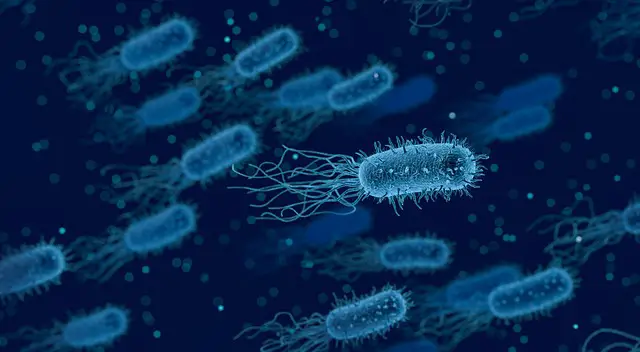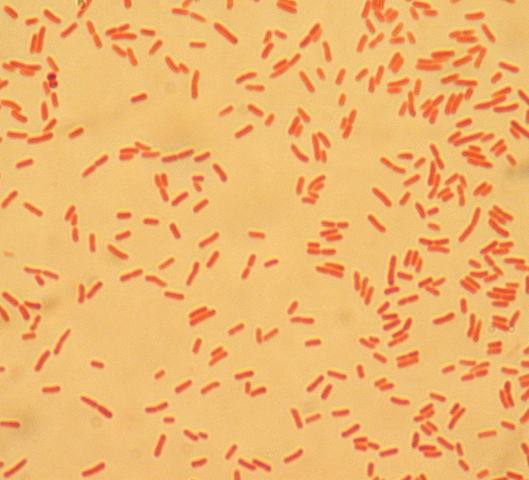Bacteriology
Definition, Classification and in Medicine
Definition: What is Bacteriology?
Bacteriology is a branch of microbiology that is concerned with the study of bacteria (as well as Archaea) and related aspects. It's a field in which bacteriologists study and learn more about the various characteristics (structure, genetics, biochemistry and ecology etc) of bacteria as well as the mechanism through which they cause diseases in humans and animals.
This has allowed researchers in the field to not only get a better understanding of bacteria and their characteristics (for identification and classification purposes etc), but also how to prevent/treat/manage diseases caused by these organisms.
This field has also allowed researchers to identify some of the benefits associated with these organisms leading to their application/use in various industries.
* Bacteriology played an important role in the development of the fields of molecular biology and genetics.
Some of the most recent discoveries in bacteriology include:
- Plastic pollution negatively affects oxygen-producing bacteria
- Discovery of a luminescent compound that kills antibiotic resistant Gram-negative bacteria at the University of Sheffield and Rutherford Appleton Laboratory
- Natural environments promote the proliferation of "good" bacteria over "bad ones"
- New bacteria species of the genus Enterobacter (E. huaxiensis and E. chuandaensis) discovered in China
More on Antibiotic Resistance here.
Classification
Though to have been the first organisms on earth, bacteria are prokaryotic cells that lack membrane-bound organelles. Based on the general structure, therefore, bacteria are some of the simplest life forms on earth.
Compared to other organisms, this group of organisms is also one of the largest on earth (estimated to be about 5 x 1030). One aspect of bacteriology entails the identification, characterization, and classification of these organisms.
Currently, a number of systems continue to be used for this classification for identification purposes.
Classification Systems
Morphology and Gram Stain
Morphology and Gram staining are two of the most important systems when it comes to bacteria classification. With regards to morphology, bacteria are classified into three major categories including Cocci (spherical in shape), Bacilli (rod-shaped), Spiral, and Vibrio which is comma-shaped.
This system of classification makes it easier to identify bacteria based on their general appearance (shape). On the other hand, Gram staining makes it possible to determine the nature of peptidoglycan of bacteria.
Whereas some bacteria are Gram-positive (bacteria with a thick layer of peptidoglycan) others are Gram-negative which means that the peptidoglycan layer on their cell wall is very thin.
These characteristics are important in that they can allow bacteriologists to distinguish bacteria based on their respective structure.
Growth Requirements
Different types of bacteria can also be classified based on their respective growth requirements.
Whereas some bacteria need oxygen for energy, others reproduce and grow well in areas with no or very little oxygen levels in their environment. While some can tolerate changes in the level of oxygen in their environment, others either strictly prefer the presence or absence of this gas for growth and reproduction.
Based on growth requirements, bacteria are classified as:
- Facultative anaerobes - Can grow in high or low oxygen environments
- Strict anaerobes - Only grow in areas with minimal or no oxygen
- Strict aerobes - Require oxygen for growth
- Microaerophilic – Bacteria that grow well in very little oxygen
Genotype
Genotypic systems in bacteriology have made it possible to classify bacteria at a molecular level.
In phylogenetics, bacteria are classified on the basis of RNA sequences as well as DNA fragments. This system is important in that it's continually being used to identify and thus classify different strains of bacteria and their biological significance in nature.
Some of the other systems used for classification have included:
- Biochemical reactions - Reactions in vivo
- Environmental classification - Endogenous or exogenous
- Serologic systems - Based on antisera
Bacteriology Fields
Medical Bacteriology
Essentially, medical bacteriology is a branch of bacteriology that gives focus to disease-causing bacteria in human beings. It entails the detection and identification of various bacterial pathogens and the mechanism through which they cause various diseases.
To some extent, medical bacteriology also entails the study of the immune system which has made it possible to determine strategies of boosting natural immunity.
Some of the bacteria of medical significance include members of:
- Clostridium - E.g. C. pertfringens
- Corynebacteria - E.g. C. diphteriae
- Listeria - E.g. L. monocytogens
- Erysipelothrix - E.g. E. rhusiopathiae
- Neisseria - E.g. N.meningitidis and N.gonorrhea
- Haemophilus - E.g. H. influenzae and H. hemolyticus
- Brucella - E.g. B. abortus
In medical bacteriology, understanding the relationship between these organisms (which are parasitic in nature in this case) and host (primary and secondary) is of great importance. It not only helps determine ways of treating diseases caused, but also finds measures that can be used to prevent or at least minimize infection rates.
In this regard, bacteriology is closely related to immunology and epidemiology. However, for the most part, this is largely with regards to bacterial infections and diseases.
Food and Water Bacteriology
Food and water bacteriology are some of the other branches closely related to medical bacteriology.
Food, which are important substances for life are also vehicles through which various bacteria can cause different types of infections and intoxications.
Some of the bacteria associated with food poisoning include:
Food contamination with these organisms cause illnesses that range from minor ailments to serious incidents that can cause death. Although food bacteriology is closely related to medical bacteriology, with regards to infections and diseases, it's also an important field of study in the food industry
It helps researchers in these fields determine ideal ways of food preservation. Such bacteria as Lactobacillus are used in some industries for food production.
Water bacteriology is also closely related to medical bacteriology given that water can also be a channel through which bacteria cause diseases.
The presence of E. coli and fecal coliform are good examples of water contamination. Here, bacteriology of water can not only help determine whether given sources of water are infected, but also provide means through which they can be treated to prevent diseases.
Various aerobic bacteria have been used for the treatment of wastewater as well as sewage. In some countries, this has been used to produce methane for energy.
Check out:
List of Diseases caused by Bacteria
How do Bacteria cause Disease?
See Differences between Microbiology and Biochemistry
Return to learning about Bacteria - Size, Shape and Arrangement
Return to Bacteria under the Microscope
Return from Bacteriology main page to MicroscopeMaster home
References
Abilo Tadesse and Meseret Alem. (2006). Medical Bacteriology. Lecture Notes Degree and Diploma Programs For Environmental Health Students.
Frank Lowy. (2009). Bacterial Classification, Structure and Function.
Moshtaq Talip Al-mohanna. (2016). Morphology and Classification of Bacteria. ResearchGate.
Waleed Eldars. (2015). General Bacteriology.
Links
https://www.accessscience.com/content/medical-bacteriology/412700
https://www.gla.ac.uk/researchinstitutes/iii/research/researchareas/bacteriology/aboutbacteriology/
Find out how to advertise on MicroscopeMaster!






